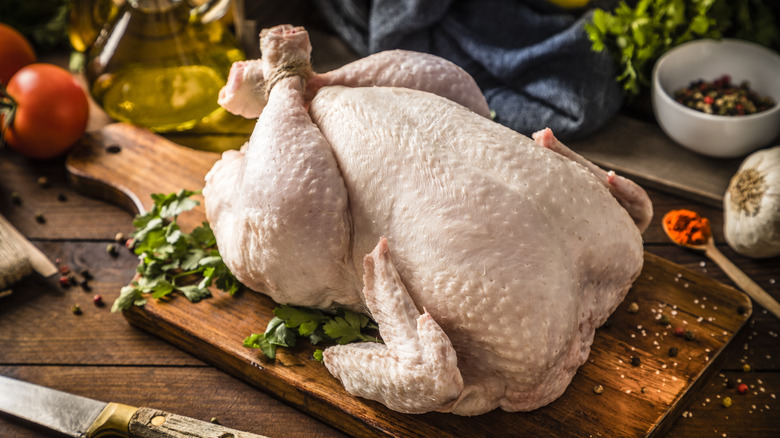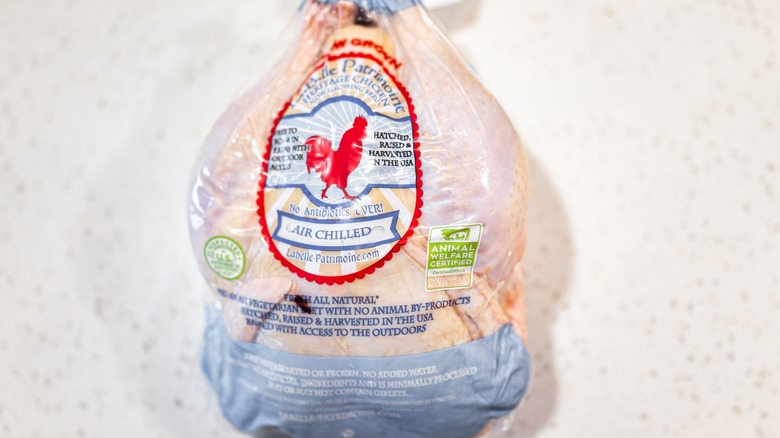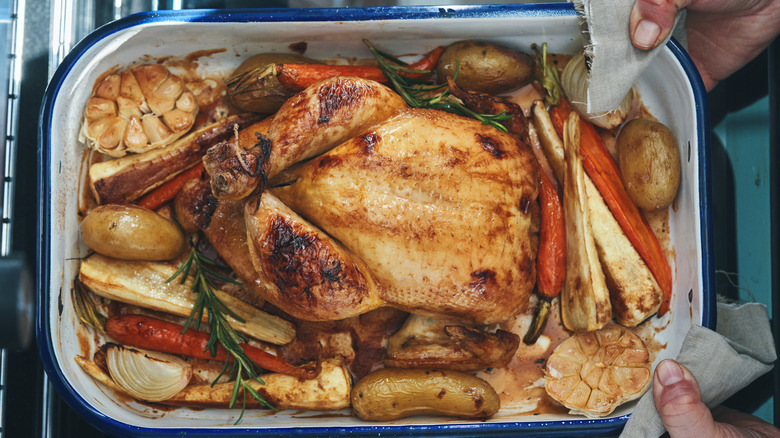How To Pick The Most Flavorful Whole Chicken At The Grocery Store
In the case of chicken, the whole is often greater than the sum of its parts, as cooking a whole chicken offers numerous benefits. Not only is it generally more cost-effective per pound compared to individual cuts, but it also allows for greater culinary versatility. Roasting it in the oven can provide enough meat for multiple meals, while cutting it up yourself at home enables you to create several completely different dishes, all from the same bird.
However, if you want a beautifully presented, perfectly cooked, juicy, and flavorful chicken, your selection matters. So, how do you choose one from the grocery store shelf that will yield that ultimate melt-in-your-mouth, roast chicken flavor? There are two key steps.
First, examine the label for terms such as antibiotic-free and air-chilled to ensure the highest quality. Second, consider the chicken's size, as there is actually an optimal range that allows for the best cooking results. Choose your whole chickens wisely, and your tastebuds will thank you.
Look out for labels
Raw chicken comes with a slew of labels, many of which seem almost intentionally confusing: natural, organic, free-range, cage-free, hormone-free. But it's important to pay attention to how a chicken is labeled, and to know which labels to look for.
First, consider organic. It's no secret that the fewer chemicals a food contains, the better it will be — not just for your health, but also for your taste buds. Organic chickens have been raised to meet USDA standards, meaning they only eat USDA-certified organic feed, free from pesticides, hormones, or unwanted chemicals. Buying organic covers three desirable labels at once; that's because, by default, USDA-certified organic chicken is considered free-range, as the chickens are required to have access to the outdoors, and antibiotic-free, since the use of antibiotics and medication is prohibited in organic chickens.
Perhaps the most important label to look out for when seeking a flavorful chicken is "air-chilled." Many chickens are chilled to the required food-safety temperature in cold water, a process that adds moisture and dilutes the flavor in the meat. However, "air-chilled" means that the bird was chilled in cold chambers with purified open air. This method retains the quality of the meat and provides the most flavorful chicken.
Size matters
You may be tempted to grab a bigger bird, perhaps because it's a better deal or simply because it'll feed more people. But sticking to a specific size will help guarantee that your chicken cooks exactly the way you want it to, and tastes full of flavor.
Chefs like Ina Garten always choose the smaller chicken when cooking because they taste better. Smaller chickens are younger, and younger chickens have more tender meat that hasn't been damaged or toughened by age. Tender meat will result in a juicier, more flavorful chicken.
The ideal size to grab is between three and four pounds. If you go much bigger, some of the meat (especially the breast meat) is at a higher risk of drying out, which nobody wants. A smaller chicken is not only more manageable to cook but also more likely to cook better — and you'll taste the difference.



